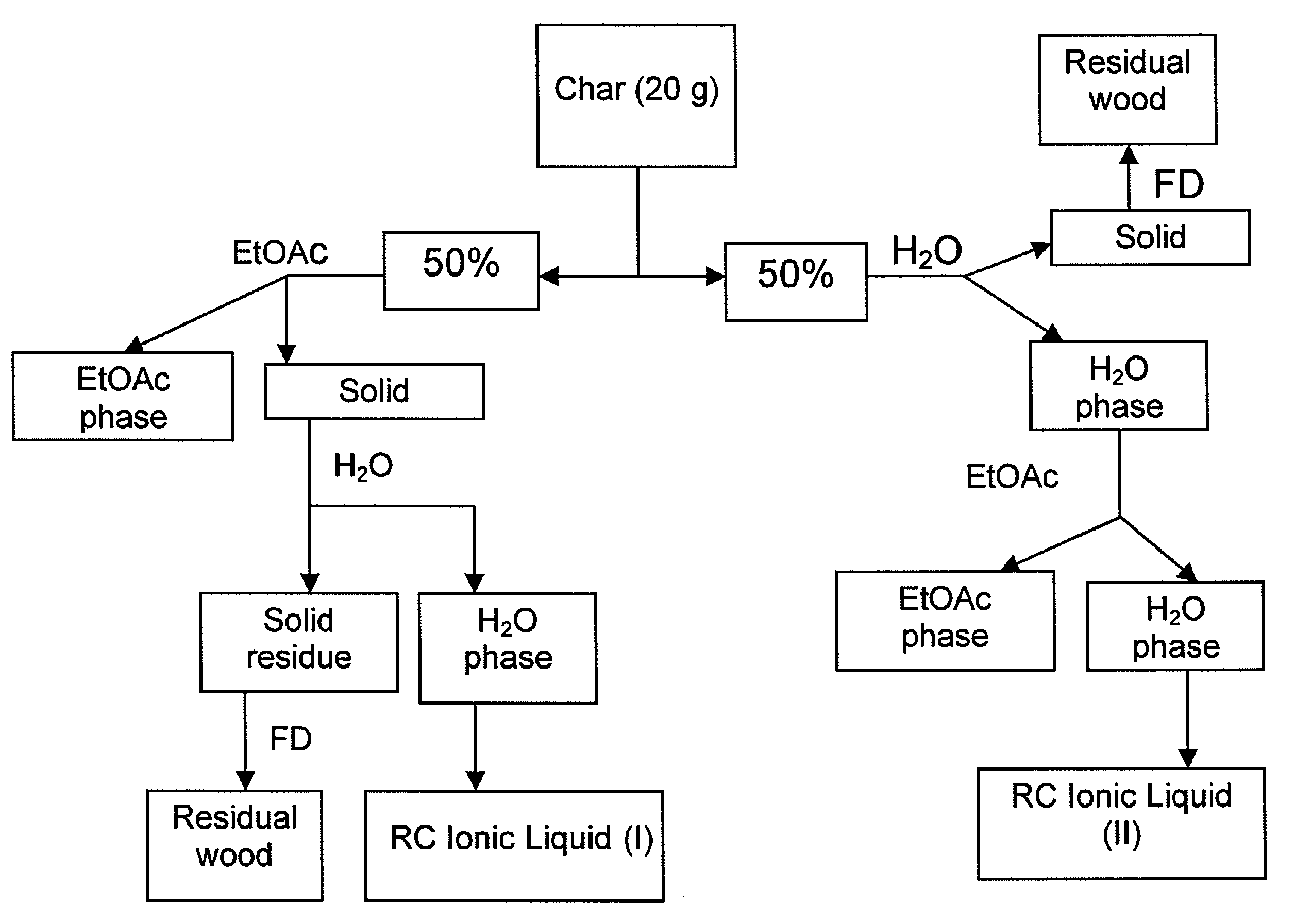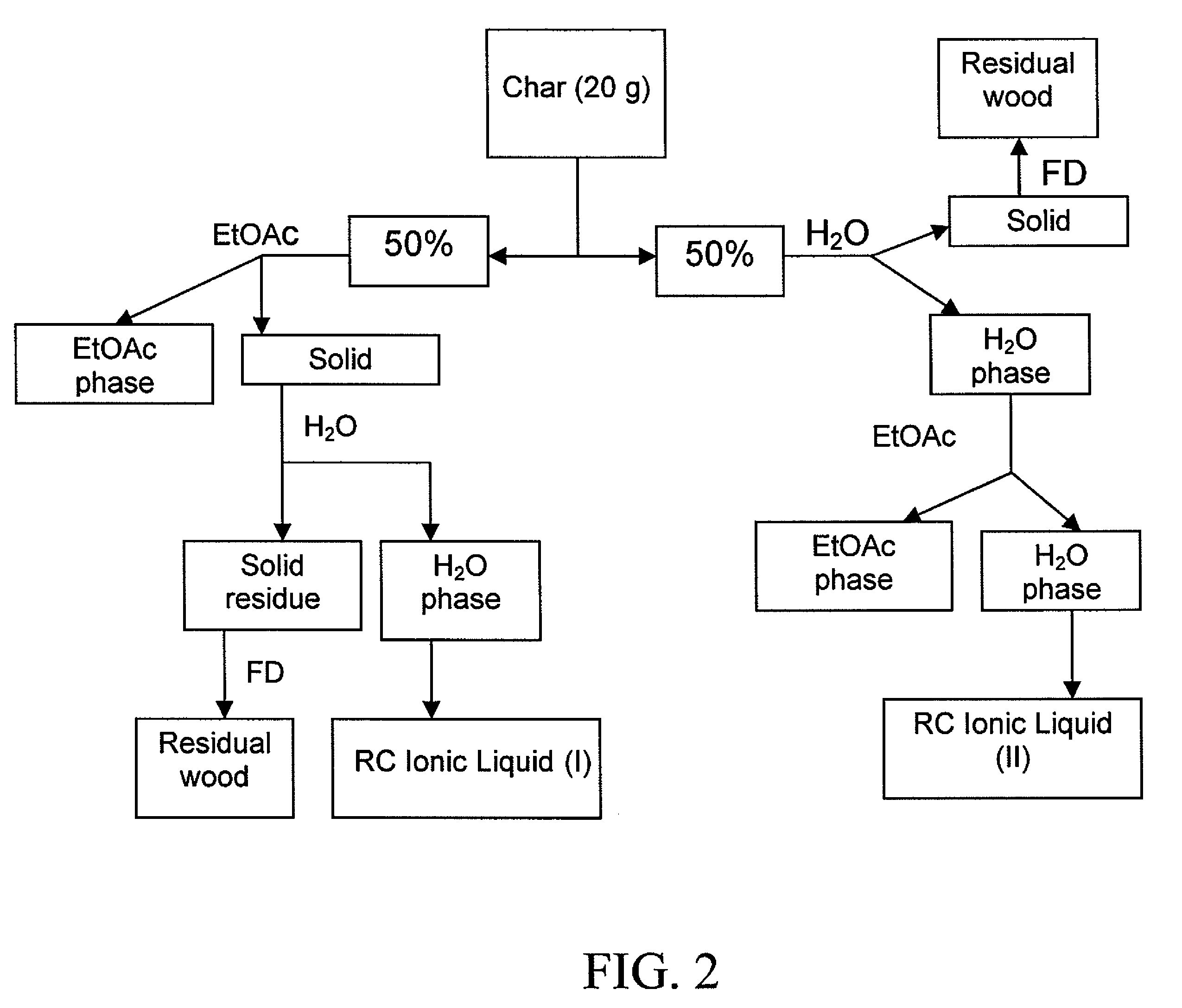Product preparation and recovery from thermolysis of lignocellulosics in ionic liquids
a technology of lignocellulosics and thermolysis, which is applied in the direction of vapor condensation, separation processes, charging devices, etc., can solve the problems of limited product mass transfer and a non-homogeneous set of products being produced, and achieve the effect of improving the yield of pyrolysis oils
- Summary
- Abstract
- Description
- Claims
- Application Information
AI Technical Summary
Benefits of technology
Problems solved by technology
Method used
Image
Examples
example 1
Preparation of 1-benzyl-3-methyl-imidazolium chloride
[0089]The ionic liquid was prepared with benzyl chloride (0.25 mol) and 1-methylimidazole (0.23 mol) using CH3CN as solvent in a 250 mL three-neck bottle. The mixture was refluxed for 48 hours under an argon atmosphere. After evaporation of the solvent and of the residual benzyl chloride, the pure ionic liquid was obtained. Drying of the materials took place at 120° C. under vacuum by stirring for 24 hours. The product was of a gelatinous nature at room temperature.
example 2
Preparation of 1-methyl-3-benzyl-imidazolium dicyanamide
[0090]The ionic liquid was prepared by anion exchange reaction between 1-methyl-3-benzylimidazolium chloride (0.20 mol) and NaN(CN)2 (0.21 mol) using water as the solvent. The homogenous mixture was stirred at room temperature for 12 hours. After evaporation of the water, 50 mL of CH2Cl2 was added into the residue. The formed NaCl was filtered, and the organic solvent phase was dried with anhydrous MgSO4. After filtration of the MgSO4 and evaporation of the solvent, a yellow liquid ionic liquid was obtained.
example 3
Dissolution of Spruce
[0091]A solution of 8% by wt. Spruce wood thermomechanical pulp (TMP) in ionic liquid (1-butyl-3-methyl imidazolium chloride) was prepared by combining the components and mechanically stirring at 110° C. over an 8 hour time period.
PUM
| Property | Measurement | Unit |
|---|---|---|
| temperature | aaaaa | aaaaa |
| temperatures | aaaaa | aaaaa |
| temperatures | aaaaa | aaaaa |
Abstract
Description
Claims
Application Information
 Login to View More
Login to View More - R&D
- Intellectual Property
- Life Sciences
- Materials
- Tech Scout
- Unparalleled Data Quality
- Higher Quality Content
- 60% Fewer Hallucinations
Browse by: Latest US Patents, China's latest patents, Technical Efficacy Thesaurus, Application Domain, Technology Topic, Popular Technical Reports.
© 2025 PatSnap. All rights reserved.Legal|Privacy policy|Modern Slavery Act Transparency Statement|Sitemap|About US| Contact US: help@patsnap.com



